Pallet Inverter: How to Minimize Downtime When Changing Pallets in Food Production?
Your production line is the heart of your operation. When it stops, everything stops. A single damaged pallet, or the need to switch from an in-house pallet to a shipping one, can bring the entire process to a halt. You know that every minute of this downtime costs you money, creates a backlog, and puts pressure on your team. The traditional solution, manual handling, is slow, physically demanding, and carries a high risk of injury to your staff and damage to your valuable products. This small, recurring problem quietly eats away at your profits and efficiency day after day.
A pallet inverter, also known as a pallet changer, is a machine designed to securely grip and rotate a full pallet load, allowing you to replace the original pallet quickly and safely. This technology minimizes production downtime by automating a slow and hazardous manual process. It ensures your line keeps moving and protects both your products and your people. A pallet change that once took multiple workers over 15 minutes can be done by one operator in under 60 seconds.
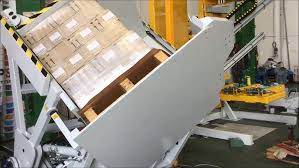
You might hear about pallet inverters mostly in the food or pharmaceutical industries. They use them for hygiene, switching from wooden pallets to clean plastic ones. But I've spent my career on the factory floor, optimizing heavy-duty packing lines for things like steel coils and industrial goods. Let me tell you, the core benefits of a pallet inverter—speed, safety, and eliminating downtime—are even more critical in these tough environments. The principles are the same, but the stakes are much higher. A small bottleneck like pallet changing can cripple an entire high-volume operation. Let’s look past the common examples and see how this technology is a powerful tool for any serious industrial facility.
What Are the Key Operational Bottlenecks a Pallet Inverter Solves in Heavy Industry?
You see a pallet with a broken board at the end of your line. Your product is heavy, maybe stacked metal parts or wound coils. What happens next? You either risk shipping on a compromised pallet, or you stop the line. Your team then has to manually unload the entire pallet, piece by piece, onto a new one. This process is a huge bottleneck. It’s slow, it’s dangerous, and it’s a productivity killer. Now, think about the other pallet-related stops: switching to heat-treated pallets for export, separating goods for different orders, or recovering a product from the bottom of a stack. Each one is a hidden cost.
A heavy-duty pallet inverter directly solves these operational bottlenecks. It automates the entire pallet exchange process for damaged pallets, switches to shipping-grade pallets, and helps manage internal logistics. By doing this, it prevents costly line stoppages. It completely removes the need for unsafe manual lifting of heavy products, which protects your team. And it safeguards your valuable goods from the damage that often occurs during manual restacking.
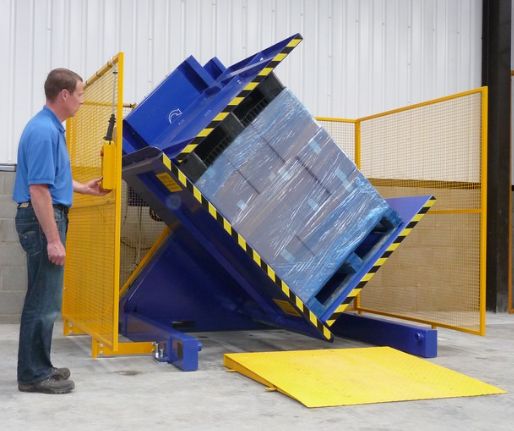
The True Cost of a Bad Pallet
A broken pallet seems like a small issue, but its costs ripple through your operation. You don't just lose the time it takes to fix the problem. You lose production capacity, you pay for idle labor, and you increase the risk of accidents and product damage. In a heavy industrial setting, these costs are magnified. The products are often high-value and heavy, making manual handling not just inefficient but extremely hazardous. A machine solves this by making the process predictable, fast, and safe.
| Metric | Manual Pallet Change | Pallet Inverter Change |
|---|---|---|
| Time per Pallet | 15-20 minutes | < 1 minute |
| Labor Required | 2-3 workers | 1 operator |
| Safety Risk | High (strains, lifting injuries) | Very Low (automated process) |
| Product Damage Risk | Moderate to High | Very Low |
| Downtime Impact | Significant line stoppage | Minimal pause |
Simplifying Your Pallet Workflow
Many efficient factories use different pallets for different purposes. You might use durable plastic or metal pallets for internal use because they last longer and don't create debris. But for shipping, you need to use cheaper, standardized wooden pallets, sometimes ones that are heat-treated for export (ISPM 15). A pallet inverter makes this a simple, integrated step in your process. The product comes to the end of the line on your high-quality internal pallet. The inverter quickly swaps it to a shipping pallet. Your expensive, durable pallets stay in your factory, reducing costs and improving internal operations.
Protecting Your Most Valuable Asset: Your People
As a former engineer and now a factory owner, I know that safety is not just about compliance; it's about respecting your team. Manual handling of heavy loads is a leading cause of workplace injuries. These injuries lead to lost workdays, increased insurance premiums, and a negative impact on morale. A pallet inverter removes one of the most strenuous manual tasks from the factory floor. It is a direct investment in the health and safety of your workforce, which always pays dividends.
How Does a Pallet Inverter Integrate into an Existing Production Line without Major Disruption?
You look at your factory floor. It's a complex system that you've built over many years. Some equipment might be over 15 years old, as you've mentioned, Javier. The thought of a major overhaul is daunting. You worry about long installation times, complex engineering, and the risk of disrupting the production you desperately need to maintain. It’s a valid concern. You can’t afford to shut down for weeks to install one new piece of equipment.
The good news is that modern pallet inverters are designed for flexible and straightforward integration. A standalone unit can be installed with very little disruption. It only needs a clear patch of floor space and can be loaded and unloaded with a standard forklift or pallet jack. For more automated lines, inverters can be seamlessly added to your existing conveyor systems. They act as a modular upgrade. You are not redesigning your entire line; you are simply adding a new, highly efficient capability to it.
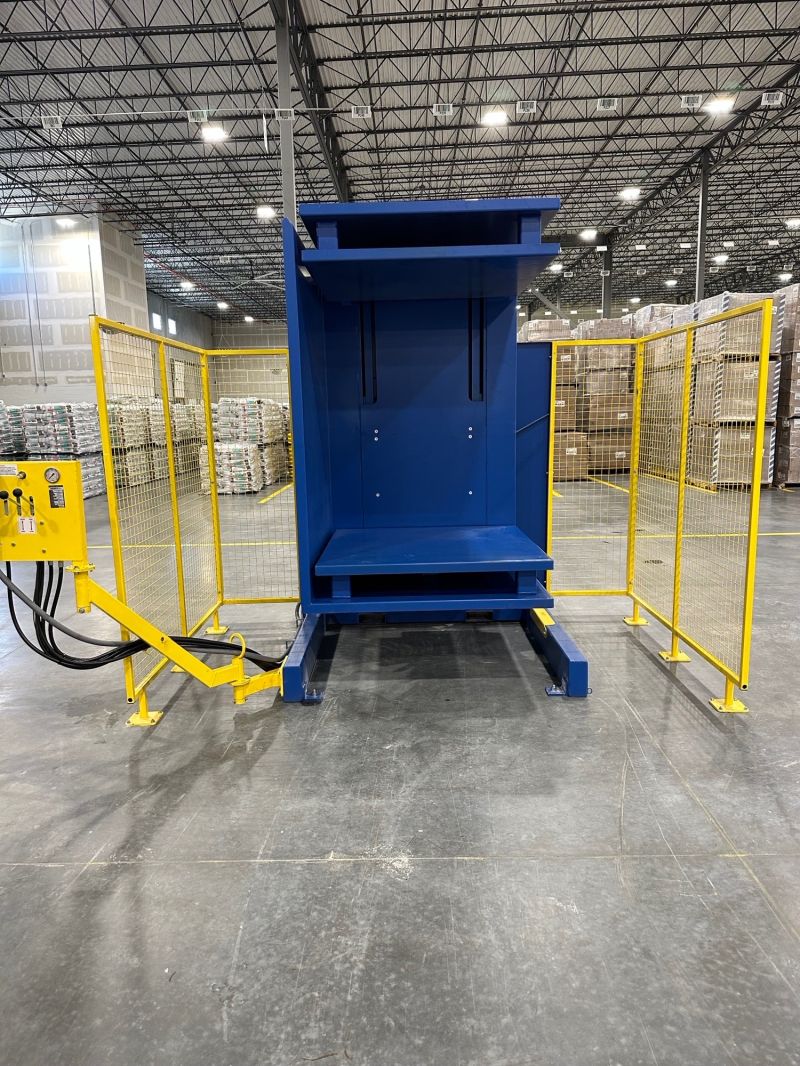
Choosing Your Integration Strategy
The right integration path depends on your current workflow and your goals. There is no one-size-fits-all answer, so it requires a bit of thought. The two main approaches are standalone or fully in-line. Each has its own benefits.
| Integration Type | Pros | Cons | Best For |
|---|---|---|---|
| Standalone Unit | Low initial cost, easy installation, high flexibility, can serve multiple lines. | Requires forklift/operator intervention, lower throughput than in-line. | Factories needing a flexible solution for various locations or with lower volume needs. |
| In-Line System | Fully automated, highest throughput, minimal labor, direct data feedback. | Higher initial cost, requires conveyor integration, more complex installation. | High-volume, automated production lines where speed is critical. |
A Step-by-Step Plan for Smooth Installation
From my experience, a successful integration always starts with a good plan. It’s not about just dropping a machine on the floor. It's a careful process.
- Site Assessment: We first look at your layout. We identify the bottleneck where pallets are being changed manually. We measure the available space and check access for forklifts.
- Workflow Analysis: We watch how your products flow. How many pallets do you need to change per hour? What are the load weights and dimensions? This data helps us choose the right model.
- Choosing the Right Machine: Based on the analysis, we select a machine with the correct capacity, speed, and features for your specific needs.
- Phased Installation: We plan the installation to cause the least disruption. For a standalone unit, this can often be done in a single day. For an in-line system, we can do much of the prep work while your line is still running, then complete the final conveyor connection during a planned maintenance window.
- Commissioning and Training: We don't just leave after the machine is installed. We test it thoroughly and train your operators and maintenance staff to use it safely and effectively.
Connecting to Your Digital Factory
You have a goal to deploy MES and IoT platforms for production visualization. This is where a modern pallet inverter becomes more than just a piece of machinery. It becomes a data node in your smart factory. The inverter’s control system (PLC) can easily "handshake" with your factory's main control system. It can report how many pallets it has changed, its cycle time, and its operational status. This data feeds directly into your MES, giving you a more complete picture of your end-of-line efficiency and helping you achieve that goal of total production visibility.
What Are the Critical Features to Look for in a Pallet Inverter for a Demanding Environment?
When you are moving loads of steel, automotive parts, or other heavy industrial goods, not just any machine will do. I have seen clients buy equipment that was not built for their environment. It fails quickly, and it becomes another problem instead of a solution. A pallet inverter designed for light boxes in a warehouse will not survive on the floor of a steel plant. The dust, the weight, and the demand for constant operation will break it.
So, when you are looking for a pallet inverter for a truly demanding environment, you must be very critical. The machine must have a high load capacity, a frame built from heavy-gauge steel, and powerful, adjustable clamping pressure. This ensures it can handle your heaviest loads without stress and adapt to different product types without causing damage. You should also look for features like dual clamping plates for better stability, heavy-duty hydraulic or electric drive systems, and a full suite of modern safety features.
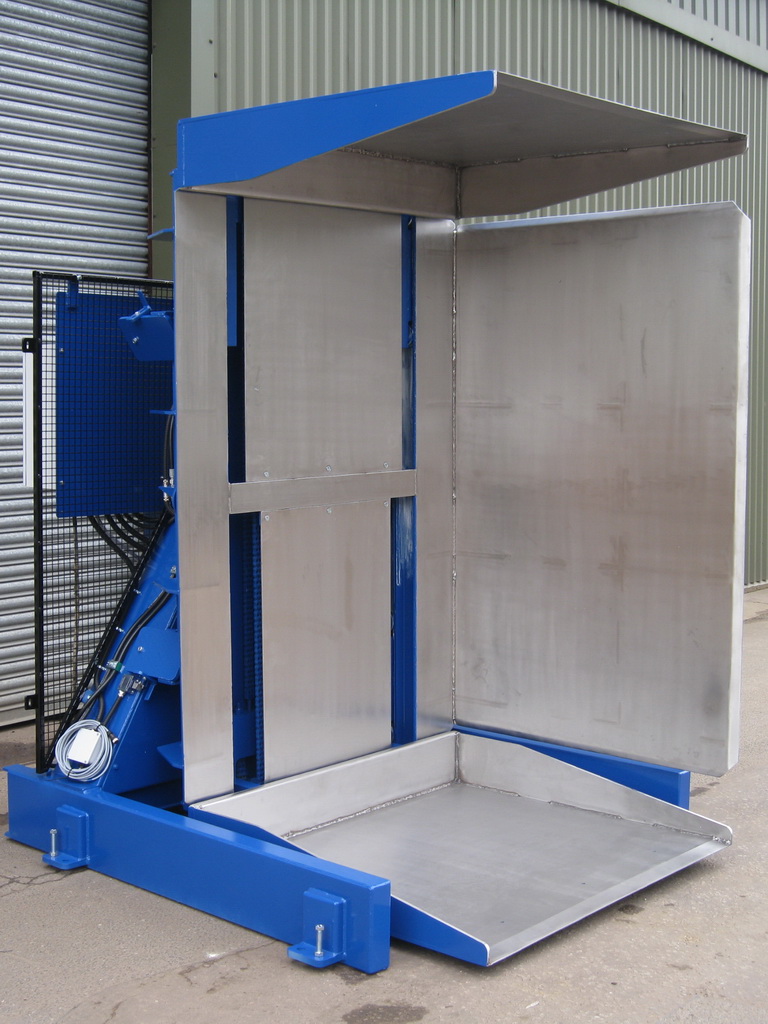
Built to Handle the Weight
The first thing to check is the load capacity. This should be clearly stated by the manufacturer. But don't just look at the number. Ask about the construction. How thick is the steel used in the frame? What is the quality of the welds? A machine that will handle 2,000 kg loads every day must be built like a tank. The structure should be solid and over-engineered to withstand the dynamic forces of rotating a heavy, and sometimes off-center, load. In my factory, we use robust steel and reinforced stress points because we know these machines will be pushed to their limits.
The Importance of the Clamping System
The clamping mechanism is the heart of the inverter. It must be both powerful and precise.
- Power: It needs enough force to hold your heaviest pallet securely through a full 180-degree rotation. Hydraulic systems are known for their power and reliability in heavy-duty applications. Electric systems are getting better and can offer more precise control and energy efficiency.
- Precision: The clamping pressure must be adjustable. A stack of solid metal blocks needs more clamping force than a stack of more delicate finished parts. An inability to adjust the pressure can lead to product damage. A good system allows your operator to set the pressure based on the product being handled.
Safety is Non-Negotiable
In a modern factory, safety systems are not optional extras. They are essential for protecting your people and complying with regulations. A well-designed pallet inverter should have multiple layers of safety.
| Safety Feature | Purpose |
|---|---|
| Physical Guarding/Cage | Prevents anyone from accidentally entering the machine's operating area. |
| Light Curtains | Creates an invisible safety barrier. If the beam is broken, the machine stops immediately. |
| Emergency Stop Buttons | Placed in easily accessible locations to allow anyone to shut down the machine instantly. |
| PLC Safety Circuits | A dedicated safety controller that monitors all safety components and ensures the machine operates only when all conditions are safe. |
| Controlled Access | The machine should only operate when doors are closed and locked. |
How Can We Justify the ROI of a Pallet Inverter Investment?
Javier, you are a CEO. You run a steel mill with a 2-million-ton capacity. I know that for you, every investment must pass a strict analysis. You need to see a clear return. The initial price of a quality, heavy-duty pallet inverter is a significant capital expense. It is easy to look at that number and hesitate. The key is to look beyond the purchase price and analyze the total value it brings to your operation.
The return on investment (ROI) for a pallet inverter is calculated by adding up the direct cost savings and the new value created from efficiency gains. This includes a dramatic reduction in labor costs because you are reassigning workers from manual handling to more valuable tasks. It includes the elimination of costs from product damaged during pallet transfers. But most importantly for an operation like yours, the ROI comes from the massive value of minimizing production downtime and increasing your overall throughput.
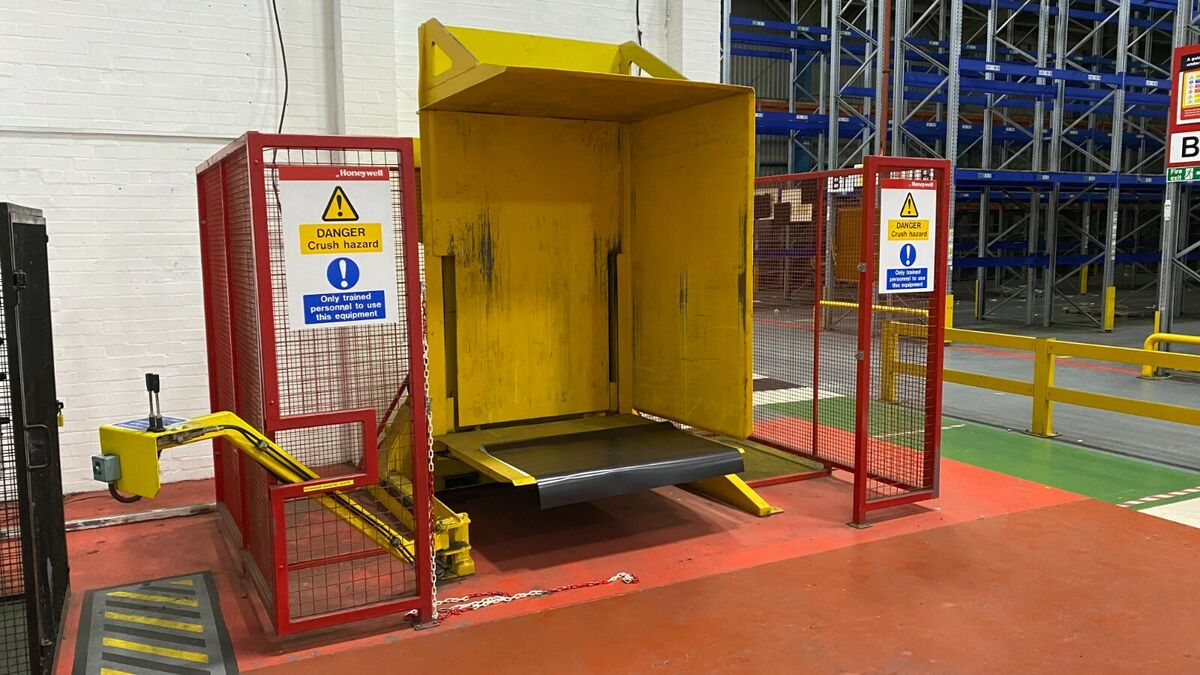
The Hard Numbers: Labor, Time, and Damage
Let's break down the tangible savings. These are the easiest numbers to calculate.
- Labor Savings: Imagine a manual pallet change requires two workers and takes 15 minutes (0.25 hours). If your loaded labor cost is $30/hour, that's $15 per pallet change (2 workers 0.25 hours $30/hour). With an inverter, one operator does it in one minute. The labor cost becomes negligible. If you change 20 pallets a day, that's a saving of nearly $300 every day, or over $70,000 a year.
- Product Damage Reduction: This can be harder to quantify, but it is real. Let's say you lose just 0.5% of your product at this stage due to damage from manual handling. If the value of a pallet load is $5,000, you are losing $25 per incident. A pallet inverter handles the load so gently that this damage is virtually eliminated. This saving goes directly to your profit margin.
The Biggest Prize: Uptime
For a high-capacity plant, uptime is everything. Your goal of reaching 95% effective run time is ambitious and correct. Downtime is where the real costs are hidden. When your line stops, the cost is not just the wages of the idle workers; it's the lost production value of your entire facility.
| Downtime Cost Per Hour | Increased Uptime with Inverter | Annual Value Gained (Single Shift) |
|---|---|---|
| $5,000 | 30 minutes/day | $625,000 |
| $10,000 | 30 minutes/day | $1,250,000 |
| $20,000 | 30 minutes/day | $2,500,000 |
As you can see, even saving 30 minutes of downtime per day creates enormous value. The pallet inverter is not a cost. It is an investment that directly contributes to your primary goal of increasing capacity utilization. It turns an unpredictable, manual bottleneck into a fast, predictable, automated step in your process. The payback period for this kind of equipment in a high-volume environment is often much shorter than you might think, sometimes less than a year.
My Insights for You, Javier
Javier, I've read about your background. Starting as a team leader and rising to become the owner of a major steel mill is an incredible achievement. It tells me you understand operations from the ground up. Your focus on ROI, your drive for technical innovation like waste heat recovery, and your practical approach resonate with me. My journey from a factory employee to starting SHJLPACK was built on these same principles. We are both engineers who understand that real progress comes from smart, strategic investments in technology.
So let's be direct. This article isn't really about pallet inverters. It's about solving the core challenges you face every day. It's about finding a strategic partner who understands your world.
You're battling aging equipment and rising downtime. A pallet inverter is a perfect example of a targeted investment to fix a specific, recurring problem. It’s a surgical strike against inefficiency. It directly attacks a common source of unplanned stops, helping you push toward that 95% uptime goal. It's a modern, reliable piece of equipment that replaces a manual process that is likely as old as your factory itself.
You are pushing for a digital transformation with MES and IoT. You want total production visibility. A modern pallet inverter is not just a dumb machine. It’s a smart, connected device. It integrates with your control systems, providing the data you need. It reports its cycles, its status, and its contribution to throughput. It becomes another data point on your dashboard, proving that your end-of-line process is running as smoothly as your furnace.
Most importantly, you need to reduce operating costs and improve profit margins. You are looking for partners who can help you with that. An investment like this is not a cost center. It is a profit driver. It delivers a clear ROI through savings in labor, elimination of product damage, and—most significantly—the financial value of every minute of production you no longer lose.
You are not looking for just a supplier; you need a partner. A partner listens. A partner understands your challenges with energy costs and market fluctuations. A partner provides full support, from the initial design discussion to installation, training, and long-term maintenance. That is the philosophy I built SHJLPACK on. We provide total solutions, not just machines.
Conclusion
A pallet inverter is more than a machine. It's a strategic tool to reduce downtime, enhance safety, and boost efficiency, directly impacting your bottom line and operational goals.



